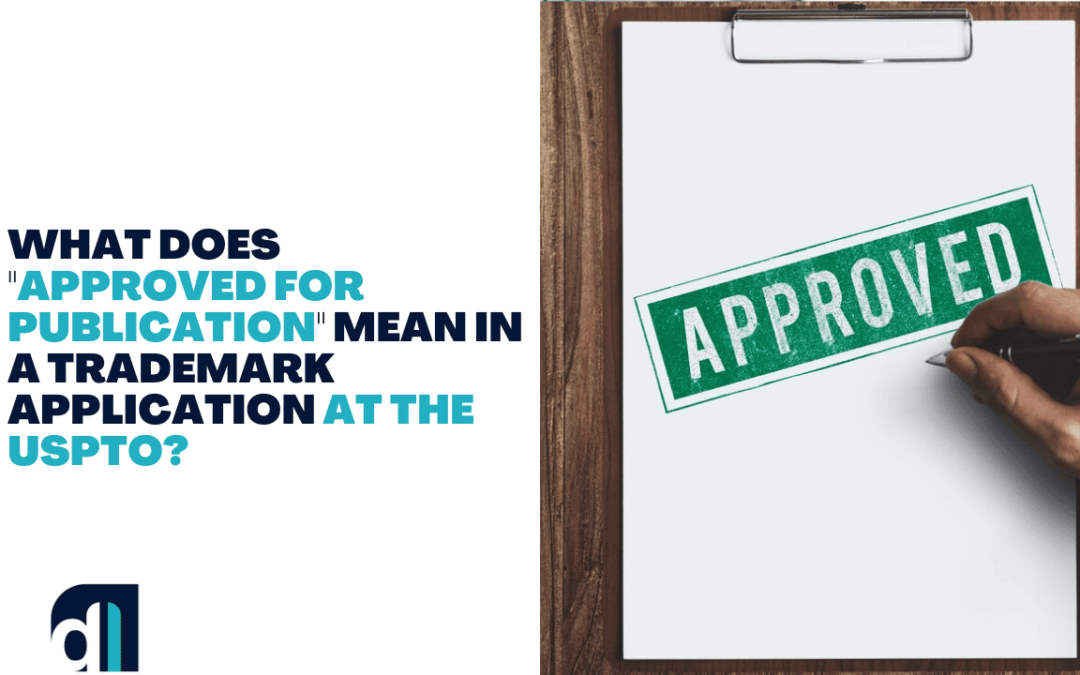To protect a brand, there is always a journey, and one important process is filing for a trademark at the United States Patent and Trademark Office.
This process is split into several stages and for each stage, the application gets closer to a formal registration and protection of the brand image.
Of these stages, one of the most important is the “Approved for Publication” status which is quite a big deal for the applicants.
The “Approved for Publication” means that the trademark examiner has gone through the application and concluded that the application is worthy to be registered.
It is a positive move as it affirms that there are no unfavorable findings that would bar the trademark from being published in the USPTO’s Official Gazette.
In this post, we’ll unpack each of these elements of this crucial step, what applicants should anticipate, and how to prepare for the last phase of trademark registration.

Trademark Application Process
The entirety of the trademark application process at the USPTO is specifically aimed at preventing the federal protection of confusing or similar trademarks.
It has several stages that take the application through a process towards registration. Here’s an overview of what applicants can expect:
The Trademark Application
This is the first official step where the applicants provide their mark, including information such as the goods or services in connection with it and the class number of the trademark.
The application should be prepared correctly to avoid such problems as mistakes or failure to provide some information that might slow down or even stop the approval.
Review by a USPTO Attorney
A USPTO examining attorney examines the application and determines whether it meets the applicable trademark laws and regulations after the submission of the application.
They search for possible conflicts with existing trademarks, evaluate the separateness of the mark, and confirm all requirements of the application. If problems exist, the attorney sends an Office Action which the applicant must respond to in order to move forward.
Notice of Allowance
If the examining attorney sees no concerning matters or objections that have to be made, the application goes to the “Approved for Publication” sub-process.
This means that the application has complied with the USPTO requirements and will soon be published in the Official Gazette where the public can comment.
The Role of the Official Gazette
After a trademark application receives the status of “Approved for Publication”, the trademark application is published in the Official Gazette of the USPTO, which is weekly.
It is an important step in the trademark process as it informs the public of the trademark that is to be registered and provides a short period of time where the public is allowed to scrutinize and if needed contest the application of the trademark.
What Is the Official Gazette?
The Official Gazette is a legal newspaper in which newly registered trademarks are printed for public viewing and scrutiny.
The USPTO helps existing businesses, organizations, or individuals to be aware of new trademark filing and they can decide whether or not they may infringe on their own registered trademarks by listing the application in the Gazette.
Publication Timeline
Published trademarks are found in the Official Gazette for a period of 30 days.
This timeframe also allows competitors, and the public at large to look at that mark and determine whether it is likely to cause confusion for their own products or services in the market.
Common Issues That Can Arise During the Publication Stage
The “Approved for Publication” stage may be thought of as a simple step towards registration; however, a number of complications may occur during the publication period, which may cause the delay of registration or even its complications.
Realizing these risks will assist the applicants to be prepared for them and avoid falling into them.
Likelihood of Confusion
The most frequent reason for opposition is the possible confusion with the existing trademark is one of the most frequently stated.
A third party may argue that it is likely to cause confusion among the public hence the new trademark is an infringement of their trademark. This can be the case where the marks resemble each other in appearance, or indeed, sound, or are used in relation to similar goods or services.
Peculiarities and Generalities
Two important requirements for trademarks to be protected are that they have to be unique. While the publication is ongoing, any member of the public may object to the registration of the trademark on the basis of lack of distinctiveness or comprising of generic terms.
For instance, if the mark is descriptive of the products or services covered by the mark then you might lose the mark on these grounds and an opposition might be filed.
Dilution Concerns
In cases of famous brands that are well-established and easily identifiable, there is a danger that a new mark may decrease the distinctive character of the brand or its distinctiveness – even if there is no possibility of confusion.
Trademark applicants of well-known marks may lodge objections should they consider that the new mark will affect the distinctiveness or popularity of their mark.
False Association or Misleading Implications
They may also oppose the registration of a new trademark that they believe may result in confusion in the market place and people may think there is a relationship between the two trademarks.
Likewise, a trademark may attract opposition if consumers construe it to be misleading or suggest qualities or origins that might mislead them.

How to check the status of your trademark application
After filing your trademark application, particularly when it has been approved for publication, it is advisable to monitor its status to be in a position to note any oppositions or any time extension.
Supervising the application is a critical process in defending your invention as you prepare to act in case of infringement of your invention’s rights.
Monitoring Your Application through the USPTO Website
The USPTO offers an online application known as the Trademark Status and Document Retrieval (TSDR) system through which you can look up the status of your trademark application whenever you want.
By providing the application serial number the user can see the status of the application in real time as well as whether it has been published in the Official Gazette and whether there are any oppositions filed.
What to Look for
The following status change points should be observed: the date of publication in the Official Gazette, the end of the opposition period, and changes in the status of the application.
In case any problems or objections appear, there will be a notice that some actions are required.
What to Do If There’s a Delay
From time to time, some processes involved in the trademark application may take some time. If your application is stuck, go to TSDR to know whether there are some issues that you have to work on or office actions that have been taken.
If no updates have been provided and you think that something got delayed, it is highly recommended to get in touch with the USPTO or with your trademark lawyer.
Strategies for Passing the “Approved for Publication” Phase
The “Approved for Publication” is a good sign but needs some attention in order to ensure that your application goes through the process of registration without hitches.
To help navigate this phase effectively, here are some useful tips:
Double-Check Your Application
It is recommended to review the trademark application before it gets to the publication level. Ensure all information provided including the description of goods and services, representation of the mark and your details are correct and comprehensive.
Slight variations in the publication process may cause some form of either delay or a complication of the whole process.
Be Conscious and Keep Track of the Official Gazette
After filing the trademark that you want to be published, you will need to look for the date of publication in the Official Gazette.
This is your chance to make sure that your mark is properly entered and to do some advance planning in case there is an objection. One must be able to look out for any other similarity in the trademarks that may be published in the same publication for one may be likely to oppose.
Respond To Potentials Oppositions As Early As Possible
As a rule, oppositions are not observed during the publication period, but it can also happen. If you think there may be any potential problems with the existing trademarks you should consult or possibly change your application before it is opposed.
Proactivity can help you avoid having to face a lot of problems in the future, as you will have already done everything you can to prevent them.
Consult a Trademark Attorney
In case of a challenge or dispute, it is not always easy to maneuver through the publication and opposition periods. When working with a trademark attorney it means you are well equipped to handle any problems that may come your way.
An experienced attorney can explain to you the details of the opposition process and if an opposition has been filed, s/he can assist you.
If you have questions about handling the “Approved Publication Trademark”, reach out to Drishti Law at 773-234-1139 for a free consultation. Our experienced attorneys are here to guide you through the registration process, helping to ensure that your brand receives the protection it deserves under state and federal laws.

Sahil Malhotra
Sahil Malhotra is an Intellectual Property Attorney, who founded Drishti (“vision”) law because of his vision in protecting dreams and ideas.
He provided individuals and small businesses with an opportunity to enhance their IP’s value by helping them register trademarks and successfully argue against office actions. In addition to his training and experience, he has been deeply involved in the multifaceted IP portfolio at UIC and continues to be associated with IP organizations and conferences.
To know more about Sahil Malhotra — Click Here
You may follow Sahil Malhotra on Facebook: Sahil Malhotra and on Instagram: @Sahil Malhotra

